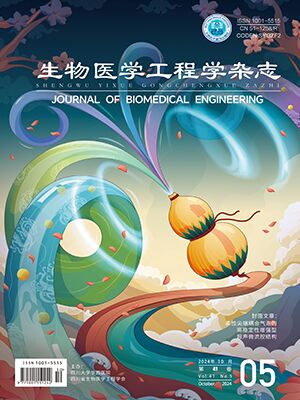| 1. |
马长生. 2019年心房颤动治疗新进展. 临床心血管病杂志, 2019, 35(11): 967-971.
|
| 2. |
Chugh S S, Havmoeller R, Narayanan K, et al. Worldwide epidemiology of atrial fibrillation: a global burden of disease 2010 study. Circulation, 2014, 129(8): 837-847.
|
| 3. |
Haissaguerre M, Jais P, Shah D C, et al. Spontaneous initiation of atrial fibrillation by ectopic beats originating in the pulmonary veins. N Engl J Med, 1998, 339(10): 659-666.
|
| 4. |
高崇瀚, 殷跃辉. 肺静脉在心房颤动机制中的作用. 心血管病学进展, 2005, 26(4): 335-337.
|
| 5. |
王淑萍, 张英杰. 心房颤动导管射频消融治疗策略. 临床荟萃, 2009, 24(2): 163-165.
|
| 6. |
侯发琴. 心房颤动的射频消融治疗进展. 心血管康复医学杂志, 2010, 19(3): 116-118.
|
| 7. |
易忠, 郭继鸿. 微波消融治疗心房颤动. 中国心脏起搏与心电生理杂志, 2005, 19(1): 67-69.
|
| 8. |
Rappaport, C. Cardiac tissue ablation with catheter-based microwave heating. Int J Hyperther, 2004, 20(7): 769-780.
|
| 9. |
Nath S, Lynch C, Whayne J G, et al. Cellular electrophysiological effects of hyperthermia on isolated guinea pig papillary muscle. implications for catheter ablation. Circulation, 1993, 88(4): 1826.
|
| 10. |
Liu J, Chen X, Xu L X. New thermal wave aspects on burn evaluation of skin subjected to instantaneous heating. IEEE Trans Biomed Eng, 1999, 46(4): 420-428.
|
| 11. |
Cattaneo C. A form of heat conduction equation which eliminates the paradox of instantaneous propagation. CR, 1958, 247(4): 431-433.
|
| 12. |
Vernotte M P. Paradoxes in the continuous theory of the heat equation. CR, 1958, 246(22): 3154-3155.
|
| 13. |
Tzou D Y. The generalized lagging response in small-scale and high-rate heating. Int J Heat Mass Tran, 1995, 38(17): 3231-3240.
|
| 14. |
张浙, 刘登瀛. 非傅里叶热传导研究进展. 力学进展, 2000, 30(3): 446-456.
|
| 15. |
Kumar A, Kumar S, Katiyar V K, et al. Phase change heat transfer during cryosurgery of lung cancer using hyperbolic heat conduction model. Comput Biol Med, 2017, 84: 20-29.
|
| 16. |
Namakshenas P, Mojra A. Numerical study of non-Fourier thermal ablation of benign thyroid tumor by focused ultrasound (FU). Biocybern Biomed Eng, 2019, 39(3): 571-585.
|
| 17. |
Singh S, Melnik R V N. Coupled thermo-electro-mechanical models for thermal ablation of biological tissues and heat relaxation time effects. Phys Med Biol, 2019, 64(24): 1-22.
|
| 18. |
袁彪, 赵胜, 赵忠, 等. 非体外循环下心外膜微波消融治疗心房颤动的临床效果. 中华心血管病杂志, 2006, 34(4): 316-318.
|
| 19. |
周贤惠, 龙德勇, 汤宝鹏. 二尖瓣峡部的解剖及射频导管消融. 中华心律失常学杂志, 2010, 14(4): 297-301.
|
| 20. |
南群, 翟飞, 郭雪梅. 心内膜微波逐点房颤消融术的温度场研究. 北京工业大学学报, 2014, 40(10): 1579-1585.
|
| 21. |
Bernardi P, Cavagnaro M, Lin J C, et al. Distribution of SAR and temperature elevation induced in a phantom by a microwave cardiac ablation catheter. IEEE T Microw Theory, 2004, 52(8): 1978-1986.
|
| 22. |
Chiang J, Wang P, Brace C L. Computational modelling of microwave tumour ablations. Int J Hyperther, 2013, 29(4): 308-317.
|
| 23. |
Shih T C, Horng T L, Huang H W, et al. Numerical analysis of coupled effects of pulsatile blood flow and thermal relaxation time during thermal therapy. Int J Heat Mass Tran, 2012, 55(13-14): 3763-3773.
|
| 24. |
Pennes H H. Analysis of tissue and arterial blood temperatures in the resting human forearm. J Appl Physiol, 1998, 85(1): 5-34.
|
| 25. |
刘鹏飞. 心脏房颤导管射频消融损伤的有限元仿真研究. 杭州: 浙江大学, 2012.
|
| 26. |
Labonte S. Numerical model for radio-frequency ablation of the endocardium and its experimental validation. IEEE Trans Biomed Eng, 1994, 41(2): 108-115.
|
| 27. |
Kumar A, Kumar S, Katiyar V K, et al. Dual phase lag bio-heat transfer during cryosurgery of lung cancer: comparison of three heat transfer models. J Therm Biol, 2017, 69: 228-237.
|
| 28. |
Vedavarz A, Kumar S, Moallemi M K. Significance of non-Fourier heat waves in conduction. J Heat Trans-T Asme, 1994, 116(1): 221-224.
|
| 29. |
Ahmadikia H, Moradi A. Non-Fourier phase change heat transfer in biological tissues during solidification. Heat Mass Transfer, 2012, 48(9): 1559-1568.
|
| 30. |
Moradi A, Ahmadikia H. Numerical study of the solidification process in biological tissue with blood flow and metabolism effects by the dual phase lag model. P I Mech Eng H, 2012, 226(5): 406-416.
|
| 31. |
González-Suárez A, Berjano E. Comparative analysis of different methods of modeling the thermal effect of circulating blood flow during RF cardiac ablation. IEEE Trans Biomed Eng, 2016, 63(2): 250-259.
|
| 32. |
Tungjitkusolmun S, Vorperian V R, Bhavaraju N, et al. Guidelines for predicting lesion size at common endocardial locations during radio-frequency ablation. IEEE Trans Biomed Eng, 2001, 48(2): 194-201.
|
| 33. |
Liu K C. Thermal propagation analysis for living tissue with surface heating. Int J Therm Sci, 2008, 47(5): 507-513.
|
| 34. |
Melo J, Adragão P, Neves J, et al. Endocardial and epicardial radiofrequency ablation in the treatment of atrial fibrillation with a new intra-operative device. Eur J Cardio-Thorac, 2000, 18(2): 182-186.
|
| 35. |
Lin J C. Catheter microwave ablation therapy for cardiac arrhythmias. Bioelectromagnetics, 1999, 20(Suppl 4): 120-132.
|
| 36. |
赵胜, 袁彪, 赵忠, 等. 不停跳心外膜微波消融治疗心房颤动. 中国医药导刊, 2006, 8(1): 28-29.
|
| 37. |
Chiu H M, Mohan A S, Weily A R, et al. Analysis of a novel expanded tip wire (ETW) antenna for microwave ablation of cardiac arrhythmias. IEEE Trans Biomed Eng, 2003, 50(7): 890-899.
|
| 38. |
Melby S J, Zierer A, Kaiser S P, et al. Epicardial microwave ablation on the beating heart for atrial fibrillation: the dependency of lesion depth on cardiac output. J Thorac Cardiov Sur, 2006, 132(2): 355-360.
|
| 39. |
Kumar D, Singh S, Rai K N. Analysis of classical Fourier, SPL and DPL heat transfer model in biological tissues in presence of metabolic and external heat source. Heat Mass Transfer, 2016, 52(6): 1089-1107.
|




